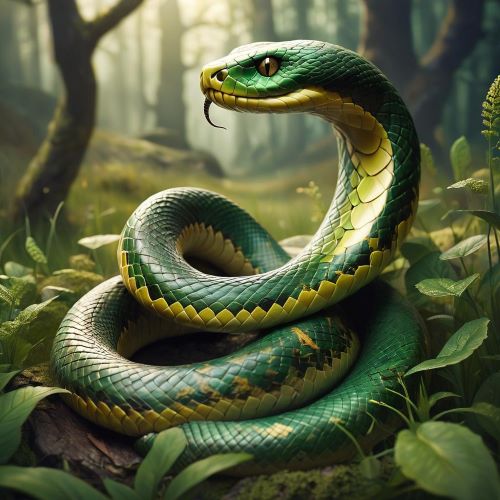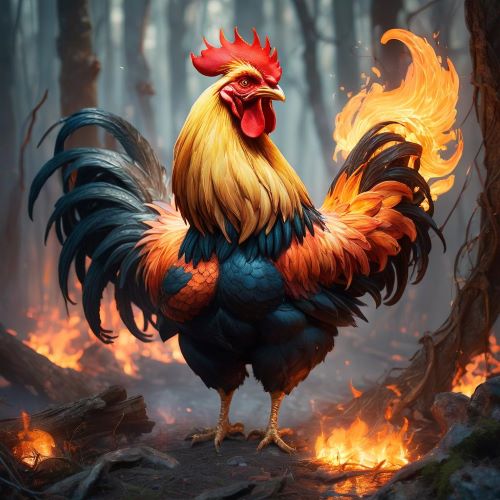Central European Animals
Central European animals hold a prominent place in the mythology and folklore of the region, serving as powerful symbols and characters that reflect the cultural heritage of various nations. From majestic creatures to cunning tricksters, these animals embody traits and values that resonate deeply with the people of Central Europe. The stories surrounding them often convey moral lessons, connect humans to the natural world, and explore themes of transformation and balance. As such, Central European animals are not merely part of the landscape; they are integral to understanding the region’s mythology and the values it upholds.
One of the most notable Central European animals is the wolf, a creature revered and feared throughout many cultures. In Slavic folklore, the wolf often represents strength, loyalty, and cunning, embodying the dual nature of the wilderness. Legends frequently feature wolves as protectors or guides, leading heroes through the dark forests, while other tales portray them as formidable adversaries. This complex portrayal highlights the respect that Central Europeans hold for nature’s untamed aspects, illustrating a nuanced understanding of the animal’s role in both the physical and spiritual realms.
The bear is another significant figure in Central European mythology, symbolizing power, courage, and protection. In many tales, the bear serves as a guardian spirit or a totem, representing the strength and resilience of the community. The bear’s hibernation and awakening cycle also connects it to themes of renewal and rebirth, reflecting the changing seasons and the rhythms of life. Stories about bears often emphasize the importance of coexistence with nature, highlighting the need for harmony between humans and the creatures that share their environment.
Deer also play a crucial role in Central European folklore, often associated with grace, purity, and the spirit of the forest. In many myths, deer serve as messengers or guides, leading heroes to hidden truths or helping them navigate challenges. Their gentle nature and majestic appearance evoke feelings of tranquility and reverence for the natural world. In some cultures, deer are linked to fertility and prosperity, embodying the bounty of the earth and the cyclical nature of life. Through these stories, the importance of nature and its creatures is celebrated, fostering a sense of stewardship and respect.
The fox, a clever and cunning character, appears frequently in Central European myths and fables, often embodying trickery and intelligence. In these tales, the fox is portrayed as a clever adversary, using its wits to outsmart larger, more powerful animals or even humans. This characterization reflects the cultural appreciation for ingenuity and adaptability, emphasizing that intelligence can be just as formidable as brute strength. The fox’s stories often serve as cautionary tales, teaching valuable lessons about the consequences of deception and the importance of being aware of one’s surroundings.
In conclusion, Central European animals are integral to the rich tapestry of mythology in the region, offering insights into the cultural values, beliefs, and relationships between humans and nature. From the noble bear and the wise deer to the cunning fox and the fierce wolf, these animals embody essential themes of strength, resilience, and cleverness. By exploring the role of Central European animals in mythology, we can better appreciate the deep connections that exist between people and the natural world, fostering a sense of respect for the creatures that inhabit it.
Central European animals hold a prominent place in the mythology and folklore of the region, serving as powerful symbols and characters that reflect the cultural heritage of various nations. From majestic creatures to cunning tricksters, these animals embody traits and values that resonate deeply with the people of Central Europe. The stories surrounding them often convey moral lessons, connect humans to the natural world, and explore themes of transformation and balance. As such, Central European animals are not merely part of the landscape; they are integral to understanding the region’s mythology and the values it upholds.
One of the most notable Central European animals is the wolf, a creature revered and feared throughout many cultures. In Slavic folklore, the wolf often represents strength, loyalty, and cunning, embodying the dual nature of the wilderness. Legends frequently feature wolves as protectors or guides, leading heroes through the dark forests, while other tales portray them as formidable adversaries. This complex portrayal highlights the respect that Central Europeans hold for nature’s untamed aspects, illustrating a nuanced understanding of the animal’s role in both the physical and spiritual realms.
The bear is another significant figure in Central European mythology, symbolizing power, courage, and protection. In many tales, the bear serves as a guardian spirit or a totem, representing the strength and resilience of the community. The bear’s hibernation and awakening cycle also connects it to themes of renewal and rebirth, reflecting the changing seasons and the rhythms of life. Stories about bears often emphasize the importance of coexistence with nature, highlighting the need for harmony between humans and the creatures that share their environment.
Deer also play a crucial role in Central European folklore, often associated with grace, purity, and the spirit of the forest. In many myths, deer serve as messengers or guides, leading heroes to hidden truths or helping them navigate challenges. Their gentle nature and majestic appearance evoke feelings of tranquility and reverence for the natural world. In some cultures, deer are linked to fertility and prosperity, embodying the bounty of the earth and the cyclical nature of life. Through these stories, the importance of nature and its creatures is celebrated, fostering a sense of stewardship and respect.
The fox, a clever and cunning character, appears frequently in Central European myths and fables, often embodying trickery and intelligence. In these tales, the fox is portrayed as a clever adversary, using its wits to outsmart larger, more powerful animals or even humans. This characterization reflects the cultural appreciation for ingenuity and adaptability, emphasizing that intelligence can be just as formidable as brute strength. The fox’s stories often serve as cautionary tales, teaching valuable lessons about the consequences of deception and the importance of being aware of one’s surroundings.
In conclusion, Central European animals are integral to the rich tapestry of mythology in the region, offering insights into the cultural values, beliefs, and relationships between humans and nature. From the noble bear and the wise deer to the cunning fox and the fierce wolf, these animals embody essential themes of strength, resilience, and cleverness. By exploring the role of Central European animals in mythology, we can better appreciate the deep connections that exist between people and the natural world, fostering a sense of respect for the creatures that inhabit it.



